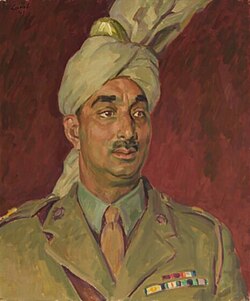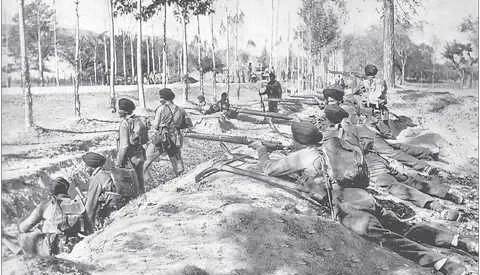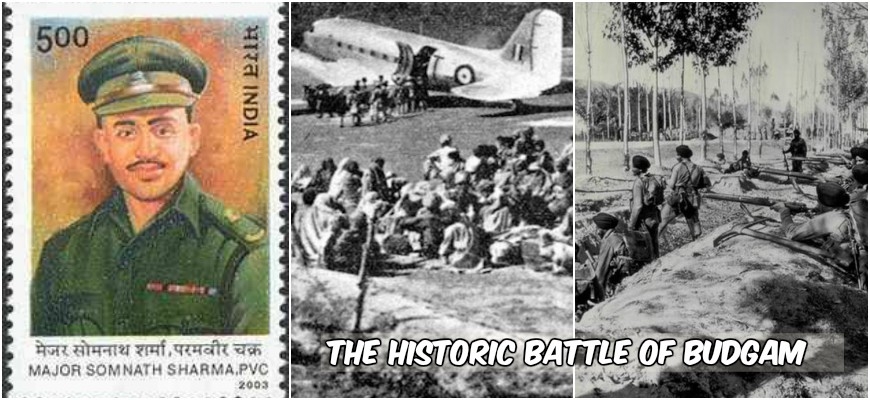
 Saquib Salim
Saquib Salim
The killing of 26 tourists by terrorists in Kashmir has shocked the nation. Fingers are being pointed towards Pakistan. One of the factors for this quick conclusion is the remarks of Pakistani Army Chief Asim Munir a few days ago. He spoke against Hindus and India while addressing a handful of expatriates. The Pahalgam terror attack also revived the memories of the 1990s when Pakistan-sponsored terrorism accounted for thousands of lives.
Why does Pakistan sponsor terrorism in Kashmir? The answer lies in the invasion of Kashmir by Pakistan just after its creation in 1947 and the drawing of the Redcliffe line as a boundary between India and Pakistan. While all the territories were settled between the two, Jammu and Kashmir was left out. M. A. Jinnah asked his trusted Army Officers to prepare for an invasion of Kashmir. Major General Akbar Khan, who was given the responsibility, wrote a detailed plan, Armed Revolt inside Kashmir, proposing that Kashmiris be given arms to keep the Indian army at bay.
 The plan of an ‘internal revolt’ was rejected by Liaquat Ali Khan. The charge was given to Sardar Shaukat Hayat Khan, Generals Zaman Kiani, and Khurshid Anwar reporting to him. Brig. Akbar Khan, with a code name of General Tariq led the Pakistani Army inside Kashmir. He is a legendary figure in Pakistan, for capturing several parts of areas of today's Pakistan-occupied Kashmir.
The plan of an ‘internal revolt’ was rejected by Liaquat Ali Khan. The charge was given to Sardar Shaukat Hayat Khan, Generals Zaman Kiani, and Khurshid Anwar reporting to him. Brig. Akbar Khan, with a code name of General Tariq led the Pakistani Army inside Kashmir. He is a legendary figure in Pakistan, for capturing several parts of areas of today's Pakistan-occupied Kashmir.
The war ended with an advantage to India. Akbar Khan wrote later, “It was the line along which the cease-fire took place that appeared unsatisfactory because as it stood now, it left with India virtually everything that she wanted.”
Akbar Khan later became Chief of the General Staff of the Pakistan Army and yet he could never reconcile to the defeat inflicted upon by India. On 23 February 1951, he gathered several top-ranking officials and Communist Party Leaders including Faiz Ahmad Faiz (famous Urdu poet) at his residence to plan a coup. They believed that the Liaquat-led government was soft on the Kashmir issue and sought a more pro-Kashmir regime in Pakistan.
The plan leaked and Akbar was tried for waging a war against the country in what is known as the Pindi Conspiracy case. Akbar Khan and Faiz were awarded prison terms. It was interesting that even though they wanted to overthrow the government, public opinion was in their favour. The Pakistani public, including the army, looked up to them as heroes of Kashmir ‘liberation’.
Keith Callard, in his book, Pakistan, notes, “One reason for the popularity of the соnspirators was a widespread belief that the primary aim of the plot was the military conquest of Kashmir.”
Akbar devised a plan called "Keep the Pot Boiling in Abdullah’s Kashmir in 1950. This paper was presented as evidence in the Pindi Conspiracy case. He suggested that in the presence of the UN observers, it would be impossible for Pakistan to violate the ceasefire. He planned to disturb peace in Kashmir.

Sikh soldiers repulsing Pakistani Army at Shalteng, on Srinagar outskirts
In one of his books, Akbar wrote, “It was clear to any thinking person that the United Nations would not be able to do anything if the situation remained as it was. In the cease-fire agreement, the U.N. had not promised any action if India did not hold a plebiscite. And apart from that there was in fact nothing there for the U.N. to do. India was quite happy to leave things as they were as she had got all she wanted. Pakistan was not threatening India in any way - and by not helping the internal freedom movement in Kashmir there was no threat to peace anywhere. Hence there was no justification for the U.N. to interfere.”
Given the public opinion, Akbar was released from prison in 1956. He wrote a famous paper, How to Solve the Kashmir Problem, and circulated it among army officers. The plan was debated in the Indian Parliament as well at that time. Akbar summarised the paper as “mere repetition of appeals to the U.N. and the Security Council could not possibly bring the U.N. into the question. as, in fact, there existed no security problem. We would have to help the people of occupied Kashmir to rise for their own freedom and if in so helping them, the Indian Government accused Pakistan of interference so much the better as this would tend to threaten the existing international peace and only then would there be reason for the United Nations again to take notice of the problem. If the worst happened and India committed aggression against Pakistan, the World would be forced to intervene against her.”

Postal stamp on Major Somnath Sharma who made supreme sacrifice in defending Kashmir in 1947 and other images (Archives)
This was a different government. Unlike Liaquat now the leadership would take Pakistan on a suicidal path, which is still an ongoing process. Iskandar Mirza, the President of Pakistan, showed interest and asked Akbar to explain the plan in detail. In Akbar’s words, “He was surprised when I explained that only 500 men at a time inside Kashmir would be enough. The terrain inside Kashmir was ideally suited for guerrilla and sabotage action - with one major road a few hundred miles long, bending every few furlongs passing through wooded hills and valleys over innumerable bridges and culverts.”
What Akbar explained to Mirza remained Pakistan's policy in Kashmir for the last several decades. He wrote, “My emphasis was on the use of lesser and lesser numbers so that a pair of men would have at least a clear mile to themselves to operate in. Thus, they would be almost impossible to detect and they would have no difficulty in going across the cease-fire line which was open in so many places to such an extent that unauthorized traffic of men and animals was constantly going on across it regularly.
“They would have to be preferably locals or at least in local clothes, armed only with some dynamite for blowing up bridges, and pliers for wire cutting….. There would have to be a second batch of 500 to keep replacing these - and a third batch of 500 under training. Their technique would have to include patience, prolonged activity, persistence, and secrecy. They would need 12 to 18 months operating in an unspectacular manner and only then would the occupied Kashmir people themselves feel truly encouraged to rise en masse. The whole project would cost about rupees 60 lacs (six million).”
Akbar Khan came to prominence in the 1970s and was one of the persons behind the genocide of Bengalis in Bangladesh. Later on, his ideas of Kashmir were implemented more seriously in Kashmir. We can see the impact of the cross-border terrorism phenomenon which rose steadily and peaked in the 1990s.
ALSO READ: What made Kashmiri youth lose memory of horrors of kabali raid?
Given the evidence, the argument that the terrorists are not controlled by the Pakistan Army falls flat. Also, let there be no illusions -- public opinion, intellectuals, communists, etc. are hand in glove with the Pakistan Army when it comes to fanning terrorism in Kashmir.
